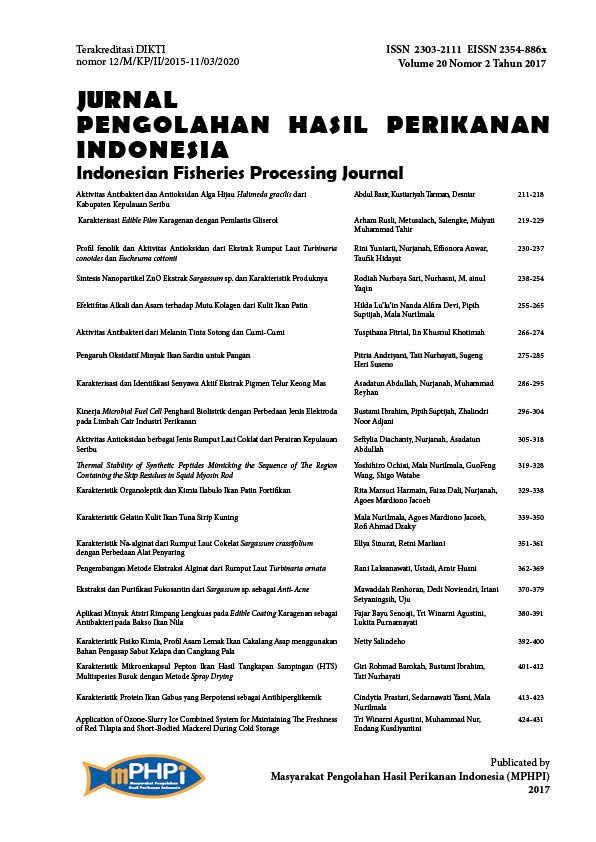Performance of Microbial Fuel Cell to Generate Bioelectricity Uses Different Kinds of Electrode in the Fish Processing Wastewater
Abstract
Microbial Fuel Cell (MFC) is one of the alternative technologies which can convert chemical energy to electrical energy through a catalytic reaction using microorganisms. The technology can be implemented for wastewater handling such as fish processing wastewater which contains highly in organic substances. The research objective was to measure the performance of MFC system using fishery processing wastewater in order to generate bioelectricity and to reduce its organic pollution load within a different material of the electrode. The electrode materials used were aluminum, iron, carbon graphite, and also the combination of aluminum and carbon graphite. The research carried out in three phases: production of fishery wastewater, assembly of MFC single chamber system and measurement of the bioelectricity produced. The bioelectricity power resulted during 120 hours of observation were 0.23V for aluminum, 0.17V for iron, 0.19V for carbon graphite, and 0.34V for the combination between aluminum and carbon graphite averagely. The MFC system can also decrease the organic load parameter of wastewater as much as total Nitrogen was 61%, BOD 30.11%, COD 59.34%, and total Nitrogen Ammonia 12.45%. The increasing of activated sludge biomass occurred on the last observation with MLSS and MLVSS values respectively 7,066.67 mg/L and 6,100 mg/L.
Authors
IbrahimB., SuptijahP., & AdjaniZ. N. (2017). Performance of Microbial Fuel Cell to Generate Bioelectricity Uses Different Kinds of Electrode in the Fish Processing Wastewater. Jurnal Pengolahan Hasil Perikanan Indonesia, 20(2), 296-304. https://doi.org/10.17844/jphpi.v20i2.17946
Authors who publish with this journal agree to the following terms:
- Authors retain copyright and grant the journal right of first publication with the work simultaneously licensed under a Creative Commons Attribution License that allows others to share the work with an acknowledgement of the work's authorship and initial publication in this journal.
- Authors are able to enter into separate, additional contractual arrangements for the non-exclusive distribution of the journal's published version of the work (e.g., post it to an institutional repository or publish it in a book), with an acknowledgement of its initial publication in this journal.





